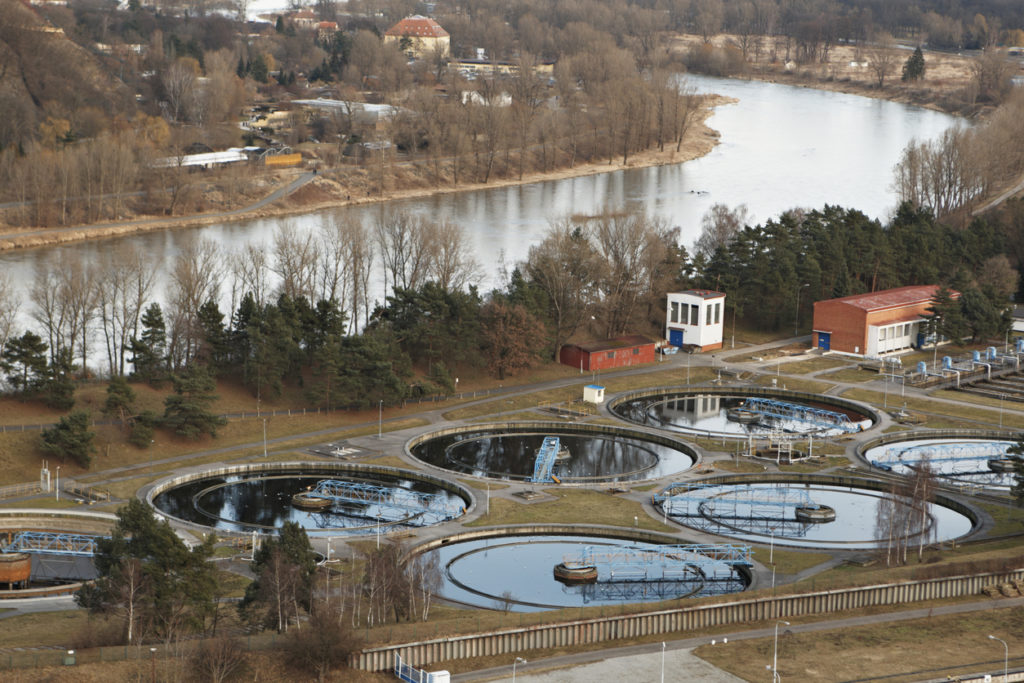Anaerobic vs. Aerobic Wastewater Treatment Systems: What’s the Difference?
Anaerobic and aerobic systems are two types of biological wastewater treatment. While they are similar in many ways, they also differ substantially, inviting questions like “Are both anaerobic and aerobic systems used in wastewater treatment?” and “What is the difference?”
Indeed, anaerobic and aerobic wastewater treatment technologies can be used independently or in combination with one another. In this post, we’ll take a look at how anaerobic and aerobic wastewater treatment technologies differ from one another, as well as their respective advantages and drawbacks that lend to their ability to complement one another on a wastewater treatment train.

What is the difference?
Anaerobic and aerobic systems are both forms of biological treatment that use microorganisms to break down and remove organic contaminants from wastewater. While both rely on a process of microbial decomposition to treat wastewater, the key difference between anaerobic and aerobic treatment is that aerobic systems require oxygen, while anaerobic systems do not. This is a function of the types of microbes used in each type of system.
While this defining characteristic can seem small, it has a number of significant implications on how each type of treatment system is designed and used for various treatment scenarios. Some of the important ways in which anaerobic and aerobic treatment systems differ include the following:
System design
Aerobic systems require some means of supplying oxygen to the biomass, which may be accomplished by wastewater treatment ponds (which work by creating a large surface area for introducing air to the wastewater), and/or by incorporating some type of mechanical aeration device to introduce oxygen into the biomass. Due to the need to circulate the wastewater or otherwise aerate it, aerobic systems tend to be less energy efficient than their anaerobic counterparts.
By contrast, anaerobic systems must be designed to prevent the exposure of the biomass sludge to air. This can be accomplished via airtight, enclosed digesters that are primarily used for batch treatment cycles, or by upflow anaerobic sludge blanket (UASB) systems that keep the biomass layer submerged below the treated effluent that, as the name suggests, flows upward toward the surface of the tank.
As a result of these system design differences, anaerobic systems tend to offer a few benefits over aerobic systems, including lower operational costs and energy demands, though they also tend to be slower, and usually require more upfront capital.
Suitability for waste stream characteristics
While anaerobic and aerobic systems are capable of treating many of the same biological constituents, there are some differences that make each technology better suited for specific contaminants, concentration levels, temperatures, or other wastewater stream characteristics. In general, aerobic treatment systems are best suited for streams with relatively low BOD/COD, and are also used for removal of nitrogen and phosphorus. On the other hand, anaerobic systems are typically used for treatment of waste streams with high concentrations of organic contaminants, and for warm wastewater streams.
Waste products and byproducts
Anaerobic and aerobic technologies differ in terms of the types of waste products that result from treatment, which can make them more or less suited for a particular application. In this arena, anaerobic treatment offers some benefits over aerobic treatment systems, as they result in less overall sludge production, as well as generation of valuable byproducts. In many cases, facilities are able to treat, then reuse and sell anaerobic byproducts, which include methane-rich biogas that can be used as an energy source, as well as sludge that is stable and safe for use as an agricultural fertilizer. Despite these benefits, anaerobic treatment systems often produce unpleasant odors, which will need to be managed in some way.
Using anaerobic and aerobic treatment together
Anaerobic and aerobic systems are most often paired for treatment of streams with a high concentration of organic contaminants. For these setups, anaerobic treatment is used for initial reduction of organic contaminant levels, while aerobic treatment is used as a secondary polishing step to further reduce BOD and TSS. In some cases, the secondary aerobic treatment step is used to oxidize ammonia to form nitrate. In general, using both technologies together results in more efficient treatment than if an aerobic system were used alone, as well as more complete contaminant removal than if anaerobic treatment were used alone.
The decision to use both technologies will typically result in higher capital costs, but lower operational and waste discharge costs. The appropriateness of using one or both types of biological treatment ultimately depends on the unique application and process conditions at a given facility.
Can SAMCO help?
SAMCO has over 40 years’ experience custom-designing and manufacturing biological wastewater treatment systems for a range of industries and applications, so please feel free to reach out to us with your questions. Contact us here to set up a consultation with an engineer or request a quote. We can walk you through the steps for developing the proper solution and realistic cost for your specific water treatment system needs.
To learn more about the services and technologies that SAMCO offers, visit our page on wastewater treatment solutions here.
If you’re interested in learning more about anaerobic biological wastewater treatment systems, these articles may be of interest to you:
- What Are Aerobic Wastewater Treatment Systems and How Do They Work?
- What Is Anaerobic Wastewater Treatment and How Does It Work?
- Common Problems with Aerobic Wastewater Treatment Systems and How to Avoid Them
- How Much Do Aerobic Wastewater Treatment Systems Cost?
- What Are the Best Biological Wastewater Treatment Equipment Supply and Technology Companies?
- Biological vs. Chemical Wastewater Treatment Which Is Better for Your Industrial Facility?
